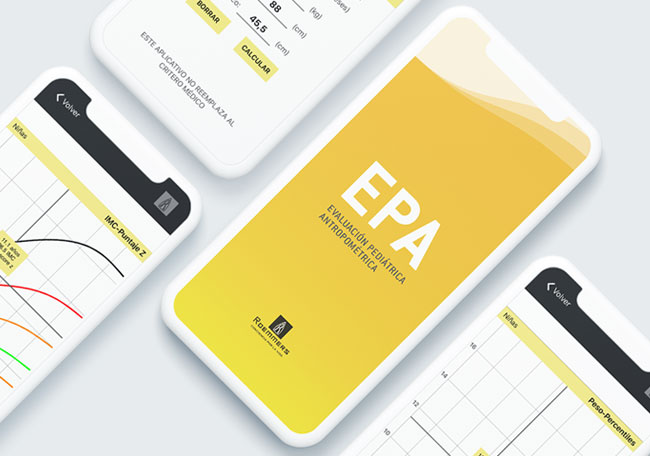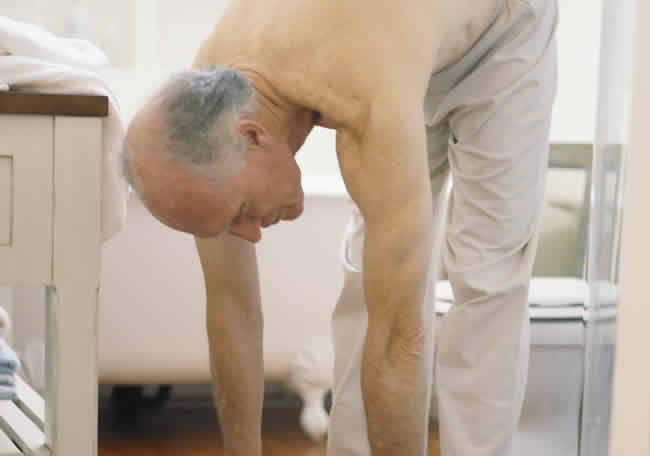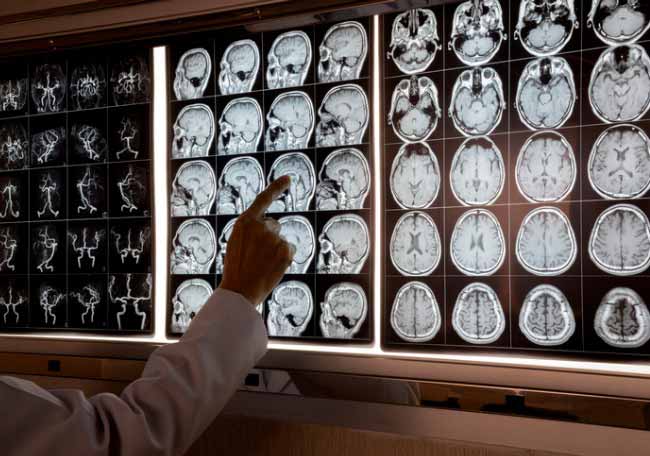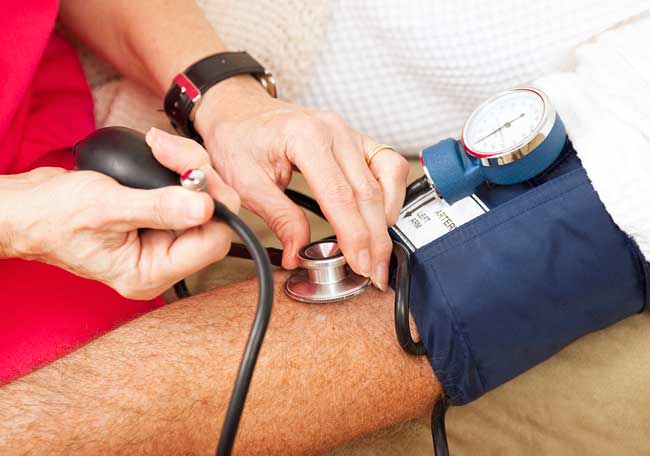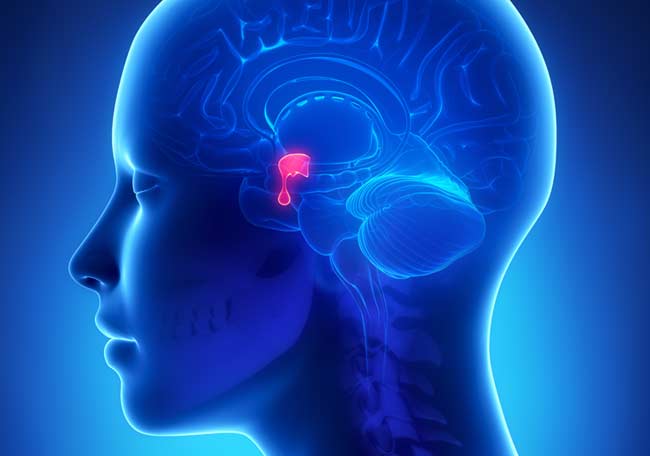Acromegalia
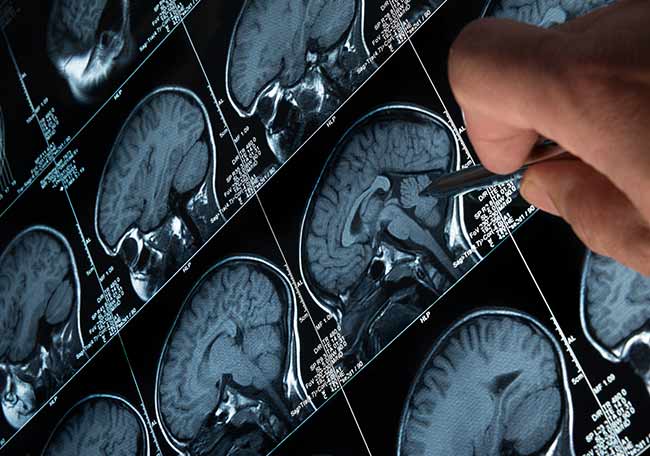
1. Marie, P. Sur Deux Cas D’acrome´galie; Hypertrophie Singulie`re non Conge´nitale des Extre´mite´s Supe´rieures, Infe´rieures et Ce´phalique [French] (F. Alcan, 1886).
2. de Herder, W. W. The history of acromegaly. Neuroendocrinology 103, 7–17 (2016).
3. Verga, A. Caso singolare de prosopectasia [Italian]. Reale Istituto Lombardo Scienze Lett. Rendiconti Classe Scienze Matematiche Naturali 1, 111–117
(1864).
4. Lombroso, C. Caso singolare di macrosomia simulante [Italian]. Giornale Ital. Malattie Veneree Malattie Pelle 2, 129–135 (1868).
5. Wier, J. in Virgo Gygantea ex Quartana Reddita [Latin] 7–10 (Oporinus, Basel, Switzerland, 1567).
6. Brigidi, V. Studii anatomopatologica sopra un uomo divenuto stranamente deforme per chronica infirmita [Italian]. Soc. Med. Fis. Fiorentina (1877).
7. Petrossians, P. et al. Acromegaly at diagnosis in 3173 patients from the Liege Acromegaly Survey (LAS) Database. Endocr. Relat. Cancer 24, 505–518 (2017).
8. Hannah- Shmouni, F., Trivellin, G. & Stratakis, C. A. Genetics of gigantism and acromegaly. Growth Horm. IGF Res. 30–31, 37–41 (2016).
9. Katznelson, L. et al. Acromegaly: an Endocrine Society clinical practice guideline. J. Clin. Endocrinol. Metab. 99, 3933–3951 (2014).
10. Colao, A., Ferone, D., Marzullo, P. & Lombardi, G. Systemic complications of acromegaly: epidemiology, pathogenesis, and management. Endocr. Rev. 25,102–152 (2004).
11. Pivonello, R. et al. Complications of acromegaly: cardiovascular, respiratory and metabolic comorbidities. Pituitary 20, 46–62 (2017).
12. Lombardi, G. et al. The cardiovascular system in growth hormone excess and growth hormone deficiency. J. Endocrinol. Invest. 35, 1021–1029 (2012).
13. Ribeiro- Oliveira, A. Jr & Barkan, A. The changing face of acromegaly—advances in diagnosis and treatment. Nat. Rev. Endocrinol. 8, 605–611 (2012).
14. Langlois, F., McCartney, S. & Fleseriu, M. Recent progress in the medical therapy of pituitary tumors. Endocrinol. Metab. (Seoul) 32, 162–170 (2017).
15. Melmed, S. New therapeutic agents for acromegaly. Nat. Rev. Endocrinol. 12, 90–98 (2016).
16. Colao, A., Auriemma, R. S., Pivonello, R., Galdiero, M. & Lombardi, G. Medical consequences of acromegaly: what are the effects of biochemical control? Rev. Endocr. Metab. Disord. 9, 21–31 (2008).
17. Vierimaa, O. et al. Pituitary adenoma predisposition caused by germline mutations in the AIP gene. Science 312, 1228–1230 (2006).
18. Daly, A. F. et al. Clinical characteristics and therapeutic responses in patients with germ- line AIP mutations and pituitary adenomas: an international collaborative study. J. Clin. Endocrinol. Metab. 95, E373–E383 (2010).
19. Trivellin, G. et al. Gigantism and acromegaly due to Xq26 microduplications and GPR101 mutation. N. Engl. J. Med. 371, 2363–2374 (2014).
20. Colao, A., Auriemma, R. S., Pivonello, R., Kasuki, L. & Gadelha, M. R. Interpreting biochemical control response rates with first- generation somatostatin analogues in acromegaly. Pituitary 19, 235–247 (2016).
21. Ben- Shlomo, A., Sheppard, M. C., Stephens, J. M., Pulgar, S. & Melmed, S. Clinical, quality of life, and economic value of acromegaly disease control. Pituitary 14, 284–294 (2011).
22. Colao, A., Auriemma, R. S., Lombardi, G. & Pivonello, R. Resistance to somatostatin analogs in acromegaly. Endocr. Rev. 32, 247–271 (2011).
23. Alexander, L., Appleton, D., Hall, R., Ross, W. M. & Wilkinson, R. Epidemiology of acromegaly in the Newcastle region. Clin. Endocrinol. 12, 71–79 (1980).
24. Bengtsson, B. A., Eden, S., Ernest, I., Oden, A. & Sjogren, B. Epidemiology and long- term survival in acromegaly. A study of 166 cases diagnosed between 1955 and 1984. Acta Med. Scand. 223, 327–335
(1988).
25. Hoskuldsdottir, G. T., Fjalldal, S. B. & Sigurjonsdottir, H. A. The incidence and prevalence of acromegaly, a nationwide study from 1955 through 2013. Pituitary 18, 803–807 (2015).
26. Agustsson, T. T. et al. The epidemiology of pituitary adenomas in Iceland, 1955-2012: a nationwide population- based study. Eur. J. Endocrinol. 173, 655–664 (2015).
27. Gruppetta, M., Mercieca, C. & Vassallo, J. Prevalence and incidence of pituitary adenomas: a population based study in Malta. Pituitary 16, 545–553 (2013).
28. Tjornstrand, A. et al. The incidence rate of pituitary adenomas in western Sweden for the period 2001–2011. Eur. J. Endocrinol. 171, 519–526 (2014).
29. Mestron, A. et al. Epidemiology, clinical characteristics, outcome, morbidity and mortality in acromegaly based on the Spanish Acromegaly Registry (Registro Espanol de Acromegalia. REA). Eur. J. Endocrinol. 151, 439–446 (2004).
30. Dal, J. et al. Acromegaly incidence, prevalence, complications and long- term prognosis: a nationwide cohort study. Eur. J. Endocrinol. 175, 181–190 (2016).
31. Daly, A. F. et al. High prevalence of pituitary adenomas: a cross- sectional study in the province of Liege, Belgium. J. Clin. Endocrinol. Metab. 91, 4769–4775 (2006).
32. Lavrentaki, A., Paluzzi, A., Wass, J. A. & Karavitaki, N. Epidemiology of acromegaly: review of population studies. Pituitary 20, 4–9 (2017).
33. Esposito, D. et al. Decreasing mortality and changes in treatment patterns in patients with acromegaly from a nationwide study. Eur. J. Endocrinol. 178, 459–469 (2018).
34. Chen, C. J. et al. Microsurgical versus endoscopic transsphenoidal resection for acromegaly: a systematic review of outcomes and complications. Acta Neurochir. (Wien) 159, 2193–2207 (2017).
35. Antunes, X. et al. Predictors of surgical outcome and early criteria of remission in acromegaly. Endocrine 60, 415–422 (2018).
36. Frara, S., Maffezzoni, F., Mazziotti, G. & Giustina, A. The modern criteria for medical management of acromegaly. Prog. Mol. Biol. Transl Sci. 138, 63–83 (2016).
37. Fernandez, A., Karavitaki, N. & Wass, J. A. Prevalence of pituitary adenomas: a community- based, crosssectional study in Banbury (Oxfordshire, UK). Clin. Endocrinol. 72, 377–382 (2010).
38. Giustina, A. et al. Assessment of the awareness and management of cardiovascular complications of acromegaly in Italy. The COM.E.T.A. (COMorbidities Evaluation and Treatment in Acromegaly) Study. J. Endocrinol. Invest. 31, 731–738 (2008).
39. De Menis, E. et al. Assessment of the awareness and management of sleep apnea syndrome in acromegaly. The COM.E.TA (Comorbidities Evaluation and Treatment in Acromegaly) Italian Study Group. J. Endocrinol. Invest. 34, 60–64 (2011).
40. Giustina, A. et al. A consensus on criteria for cure of acromegaly. J. Clin. Endocrinol. Metab. 95, 3141–3148 (2010).
41. Giustina, A. et al. Criteria for cure of acromegaly: a consensus statement. J. Clin. Endocrinol. Metab. 85, 526–529 (2000).
42. Polanco- Briceno, S., Glass, D. & Plunkett, C. Communication practices and awareness of resources for acromegaly patients among endocrinologists. Patient Prefer Adherence 10, 2531–2541 (2016).
43. Cannavo, S., Trimarchi, F. & Ferrau, F. Acromegaly, genetic variants of the aryl hydrocarbon receptor pathway and environmental burden. Mol. Cell Endocrinol. 457, 81–88 (2017).
44. Raappana, A., Koivukangas, J., Ebeling, T. & Pirila, T. Incidence of pituitary adenomas in Northern Finland in 1992–2007. J. Clin. Endocrinol. Metab. 95, 4268–4275 (2010).
45. Bex, M. et al. AcroBel—the Belgian registry on acromegaly: a survey of the ‘real- life’ outcome in 418 acromegalic subjects. Eur. J. Endocrinol. 157, 399–409 (2007). 14
68. Melmed, S. Medical progress: acromegaly. N. Engl. J. Med. 355, 2558–2573 (2006).
69. Garby, L. et al. Clinical characteristics and outcome of acromegaly induced by ectopic secretion of growth hormone- releasing hormone (GHRH): a French nationwide series of 21 cases. J. Clin. Endocrinol. Metab. 97, 2093–2104 (2012).
70. Melmed, S., Ezrin, C., Kovacs, K., Goodman, R. S. & Frohman, L. A. Acromegaly due to secretion of growth hormone by an ectopic pancreatic islet- cell tumor. N. Engl. J. Med. 312, 9–17 (1985).
71. Rostomyan, L. & Beckers, A. Screening for genetic causes of growth hormone hypersecretion. Growth Horm. IGF Res. 30–31, 52–57 (2016).
72. Cazabat, L. et al. Germline AIP mutations in apparently sporadic pituitary adenomas: prevalence in a prospective single- center cohort of 443 patients. J. Clin. Endocrinol. Metab. 97, E663–E670
(2012).
73. Caimari, F. & Korbonits, M. Novel genetic causes of pituitary adenomas. Clin. Cancer Res. 2, 5030–5042 (2016).
74. Schofl, C. et al. Frequency of AIP gene mutations in young patients with acromegaly: a registry- based study. J. Clin. Endocrinol. Metab. 99, E2789–E2793
(2014).
75. Reid, T. J. et al. Features at diagnosis of 324 patients with acromegaly did not change from 1981 to 2006: acromegaly remains under- recognized and underdiagnosed. Clin. Endocrinol. 72, 203–208 (2010).
76. Kreitschmann- Andermahr, I. et al. Diagnosis and management of acromegaly: the patient’s perspective. Pituitary 19, 268–276 (2016).
77. Grynberg, M., Salenave, S., Young, J. & Chanson, P. Female gonadal function before and after treatment of acromegaly. J. Clin. Endocrinol. Metab. 95, 4518–4525 (2010).
78. Chanson, P., Salenave, S. & Kamenicky, P. Acromegaly. Handb. Clin. Neurol. 124, 197–219 (2014).
79. Kropf, L. L., Madeira, M., Vieira Neto, L., Gadelha, M. R. & de Farias, M. L. Functional evaluation of the joints in acromegalic patients and associated factors. Clin. Rheumatol. 32, 991–998 (2013).
80. Scarpa, R. et al. Acromegalic axial arthropathy: a clinical case- control study. J. Clin. Endocrinol. Metab. 89, 598–603 (2004).
81. Mazziotti, G. et al. Prevalence of vertebral fractures in men with acromegaly. J. Clin. Endocrinol. Metab. 93, 4649–4655 (2008).
82. Wassenaar, M. J. et al. High prevalence of vertebral fractures despite normal bone mineral density in patients with long- term controlled acromegaly. Eur. J. Endocrinol. 164, 475–483 (2011).
83. Tagliafico, A. et al. Ultrasound measurement of median and ulnar nerve cross- sectional area in acromegaly. J. Clin. Endocrinol. Metab. 93, 905–909 (2008).
84. Bihan, H. et al. Long- term outcome of patients with acromegaly and congestive heart failure. J. Clin. Endocrinol. Metab. 89, 5308–5313 (2004).
85. Alexopoulou, O. et al. Prevalence and risk factors of impaired glucose tolerance and diabetes mellitus at diagnosis of acromegaly: a study in 148 patients. Pituitary 17, 81–89 (2014).
86. Freda, P. U. et al. Lower visceral and subcutaneous but higher intermuscular adipose tissue depots in patients with growth hormone and insulin- like growth factor I excess due to acromegaly. J. Clin. Endocrinol. Metab. 93, 2334–2343 (2008).
87. Katznelson, L. Alterations in body composition in acromegaly. Pituitary 12, 136–142 (2009).
88. Attal, P. & Chanson, P. Endocrine aspects of obstructive sleep apnea. J. Clin. Endocrinol. Metab. 95, 483–495 (2010).
89. Herrmann, B. L. et al. Effects of octreotide on sleep apnoea and tongue volume (magnetic resonance imaging) in patients with acromegaly. Eur. J. Endocrinol. 151, 309–315 (2004).
90. Delhougne, B. et al. The prevalence of colonic polyps in acromegaly: a colonoscopic and pathological study in 103 patients. J. Clin. Endocrinol. Metab. 80,3223–3226 (1995).
91. Clemmons, D. R. Consensus statement on the standardization and evaluation of growth hormone and insulin- like growth factor assays. Clin. Chem. 57, 555–559 (2011).
92. Bidlingmaier, M. et al. Reference intervals for insulinlike growth factor-1 (IGF- I) from birth to senescence: results from a multicenter study using a new automated chemiluminescence IGF- I immunoassay conforming to recent international recommendations. J. Clin. Endocrinol. Metab. 99, 1712–1721 (2014).
93. Chanson, P. et al. Reference values for IGF- I serum concentrations: comparison of six immunoassays. J. Clin. Endocrinol. Metab. 101, 3450–3458 (2016).
94. Freda, P. U., Reyes, C. M., Nuruzzaman, A. T., Sundeen, R. E. & Bruce, J. N. Basal and glucosesuppressed GH levels less than 1 microg/L in newly diagnosed acromegaly. Pituitary 6, 175–180 (2003).
95. Dimaraki, E. V., Jaffe, C. A., DeMott- Friberg, R., Chandler, W. F. & Barkan, A. L. Acromegaly with apparently normal GH secretion: implications for diagnosis and follow- up. J. Clin. Endocrinol. Metab. 87, 3537–3542 (2002).
96. Arafat, A. M. et al. Growth hormone response during oral glucose tolerance test: the impact of assay method on the estimation of reference values in patients with acromegaly and in healthy controls, and the role of gender, age, and body mass index. J. Clin. Endocrinol. Metab. 93, 1254–1262 (2008).
97. Ribeiro- Oliveira, A. Jr., Faje, A. T. & Barkan, A. L. Limited utility of oral glucose tolerance test in biochemically active acromegaly. Eur. J. Endocrinol. 164, 17–22 (2011).
98. Carmichael, J. D., Bonert, V. S., Mirocha, J. M. & Melmed, S. The utility of oral glucose tolerance testing for diagnosis and assessment of treatment outcomes in 166 patients with acromegaly. J. Clin. Endocrinol. Metab. 94, 523–527 (2009).
99. Beckers, A. et al. X- Linked acrogigantism syndrome: clinical profile and therapeutic responses. Endocr. Relat. Cancer 22, 353–367 (2015).
100. Karimova, M. M. et al. Pachydermoperiostosis masquerading as acromegaly. J. Endocr. Soc. 1, 109–112 (2017).
101. Sun, Y. et al. Loss- of-function mutations in IGSF1 cause an X- linked syndrome of central hypothyroidism and testicular enlargement. Nat. Genet. 44, 1375–1381 (2012).
102. Joustra, S. D. et al. IGSF1 deficiency: lessons from an extensive case series and recommendations for clinical management. J. Clin. Endocrinol. Metab. 101, 1627–1636 (2016).
103. Potorac, I. et al. Pituitary MRI characteristics in 297 acromegaly patients based on T2-weighted sequences. Endocr. Relat. Cancer 22, 169–177 (2015).
Comentarios
Para ver los comentarios de sus colegas o para expresar su opinión debe ingresar con su cuenta de IntraMed.
